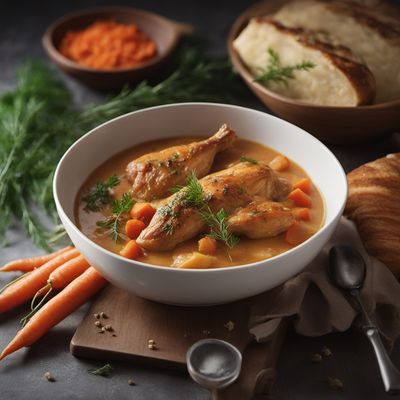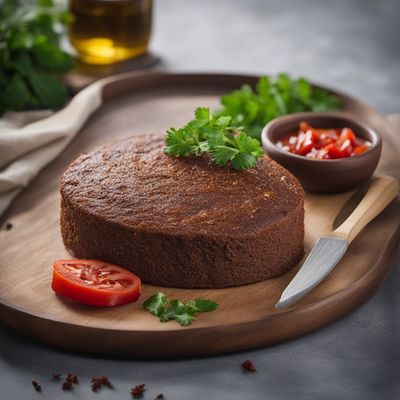
Cuisine
Danish cuisine
Danish cuisine is a reflection of the country's agricultural heritage and coastal location. The cuisine is known for its use of seafood, pork, and dairy products, as well as its simple, elegant preparations. Danish cuisine has evolved over time, incorporating new ingredients and techniques while staying true to its roots.
Typical ingredients
Seafood (such as herring, salmon, cod), Pork, Dairy products (such as cheese and butter), Potatoes, Carrots, Cabbage, Apples
Danish cuisine is also known for its beer and aquavit, as well as its traditional pastries, such as wienerbrød (a type of Danish pastry) and kanelbullar (cinnamon buns).
More cuisines from this region...
History
Danish cuisine has a long history, dating back to the Viking era. The country's agricultural traditions have played a major role in shaping the cuisine, with a focus on fresh, local ingredients. Danish cuisine has also been influenced by the country's history of colonization and immigration, with influences from Germany, France, and beyond.
Cultural significance
Danish cuisine is an important part of the country's cultural heritage, and is celebrated at festivals and events throughout the year. The cuisine is also known for its traditional dishes, such as smørrebrød (an open-faced sandwich) and frikadeller (meatballs).
Health benefits and considerations
Danish cuisine is generally healthy and nutritious, with a focus on fresh, whole ingredients. However, some dishes may be high in fat or salt, so it is important to enjoy them in moderation.
Danish cuisine dishes Browse all »

Andesteg
Roast Duck
Andesteg is a traditional Danish dish that combines the richness of duck meat with the sweetness of prunes and apples. It is a perfect dish for special occasions and holidays.

Rødspættefilet
Plaice Fillet
Rødspættefilet is a traditional Danish dish made with flatfish fillets. It is a simple yet delicious dish that is perfect for a quick and easy dinner.

Millionbøf
Million beef
Millionbøf is a traditional Danish dish that is perfect for any occasion. This dish is made with tender ground beef, which is slow-cooked with a variety of vegetables and...

Gule Ærter
Yellow pea soup
Gule Ærter is a traditional Danish dish made with yellow peas and pork. It is a hearty and flavorful dish that is perfect for cold winter nights.

Hindbærsnitter
Raspberry Slices
Hindbærsnitter is a traditional Danish pastry made with raspberry jam and puff pastry. It is a popular snack during the summer months when raspberries are in season.

Småkager
Småkager, also known as Danish butter cookies, are a classic Scandinavian treat that are perfect for any occasion. These cookies are made with butter, sugar, flour, and...

Stjerneskud
Shooting Star
A classic Danish dish, the stjerneskud is a seafood sandwich that is perfect for a light lunch or dinner.

Æggekage
Danish egg dish with bacon and onions
Æggekage is a traditional Danish dish that is made with eggs, milk, and flour. It is a simple and delicious dish that is perfect for breakfast or brunch.
Danish cuisine recipes Browse all »

Brunsviger with a Twist
Caramelized Cinnamon Delight

Danish Crispy Fish Fillet with Remoulade Sauce
Crispy Delights: Danish Fish Fillet with Tangy Remoulade Sauce

Danish Almond Kringle
Scandinavian Delight: Danish Almond Kringle

Smoked Herring on Rye with Egg and Onions
Nordic Delight: Smoky Herring Open-Faced Sandwich

Danish Liver Pâté
Savory Delight: Danish Liver Pâté

Danish-inspired Wakame Noodle Salad
Nordic Seaweed Delight: Danish-inspired Wakame Noodle Salad

Danish Cream-filled Lamingtons
Decadent Cream-filled Delights: Danish Lamingtons

Rhubarb Cake
Tangy Delight: Rhubarb Cake with a Danish Twist

Vanilla Almond Cookies
Scandinavian Delights: Vanilla Almond Cookies

Danish Shrimp Salad
Nordic Delight: Danish Shrimp Salad with a Twist

Classic Danish Chicken Stew
Hearty Danish Chicken Stew: A Taste of Tradition

Danish-inspired Zigini with Rye Bread
Savory Danish Twist: Rye Bread Zigini